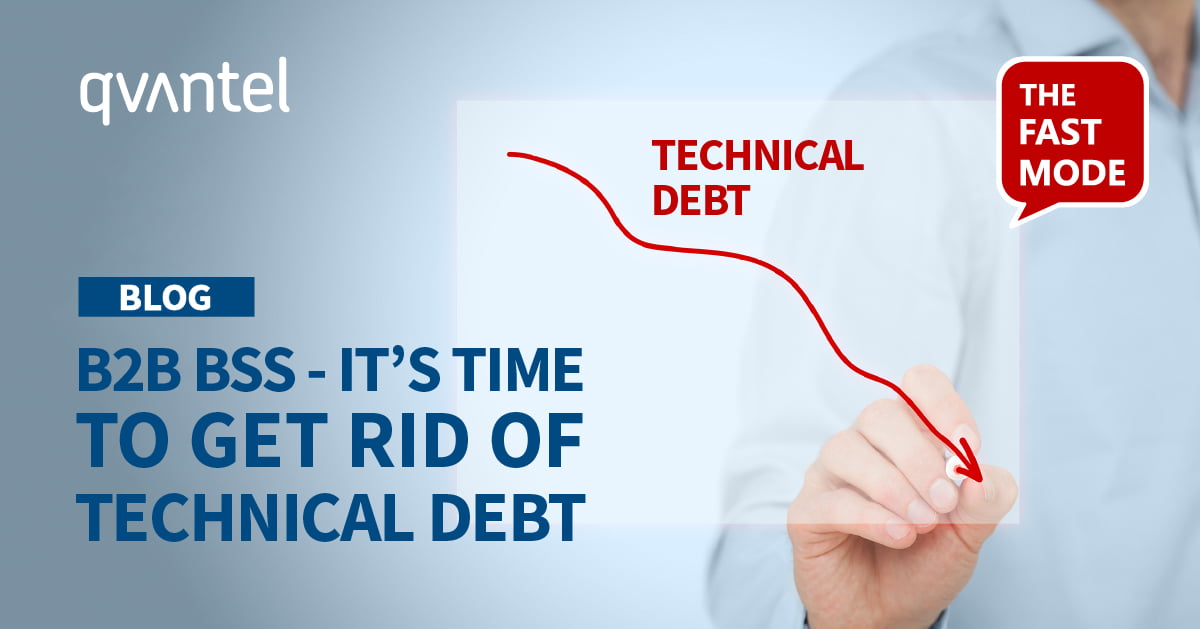
This article was first published in The Fast Mode.
When any industry undergoes significant change the legacy systems that have been used for years start to struggle to cope with new advances. The sticking plaster approach of throwing more money and resources at legacy systems in order to get them to just about cope with the demands of the business will work for a short time.
Soon this will quickly become unsustainable as the rate of change accelerates. Technical debt is the cost of implementing quick fixes on systems that are no longer fit for purpose. An analogy is running a 20-year-old car with 500,000km on the clock.
Each year your repair bill goes up and up as you struggle to pass tests for roadworthiness to keep your car on the road. There reaches a point where it just costs too much money and is too much of a pain, so you go and buy a new car as it is fit for purpose, will save you money and reduce headaches.
As we see ever more change in telecoms, we will see the technical debt for legacy systems increase. More change requests for new offers and processes will drive up costs and slow down time to market. Consulting firm, McKinsey developed a technical debt score tool to help companies measure their technical debt and see where they are compared to their peers.
McKinsey said that common symptoms of technical debt were “product delays, hidden risks, spiralling costs, and even engineers leaving in frustration.” In any business, these aren’t good. In a CSP business where revenue growth has been marginal at best over recent years, they could cause some serious damage to the company.
CSPs should ask the question of how much they have spent on system maintenance, patches and change requests in the last three years for their legacy BSS. Then have a look at the corporate KPIs and see how the legacy BSS has helped contribute. Is APRU up? Are revenues from non-connectivity offers up as much as the business would have wanted?
Is the percentage of customer engagement via digital channels as much as hoped for and how long does it take to get a new offer developed, launched and monetized (time to market)? Then there’s the opportunity cost.
How much opportunity has been lost because the legacy BSS couldn’t respond fast enough to a request from the marketing team? How come the new digital-first sub-brand that a CSP find themselves competing with is able to get new offers out the door, while the CSP is stuck spec’ing out change requests with their legacy BSS vendor?
While many CSPs have upgraded their BSS stacks to provide digital channels and services for B2C, in the B2B space it’s somewhat different. With the rollout of 5G and 5G SA coming quickly down the line CSPs are now looking at the BSS stacks they have for B2B customers and asking if they will enable the new 5G B2B revenues that many CSPs are hoping for.
The answer lies in the results of a survey that TM Forum carried out. From a survey of 133 executives from 79 CSPs around the world, almost half of CSPs (48%) said that their existing BSS stacks would only be able to support less than 50% of the 5G B2B services that they were planning to sell.
Given that BSS covers sales, care, product catalog and revenue management, then this statistic should be worrying for CSPs given their ambitions and hopes for 5G B2B. In the same survey, TM Forum asked CSPs what they see as their most important requirements from BSS for B2B.
Top of the wish list by a clear margin was ‘flexibility and scalability’ with 87% of CSPs rating this as ‘extremely important’. How much technical debt will be accrued by updating B2B BSS legacy stacks to cater for new 5G offers and processes? How much money will be needed to deliver the levels of scalability and flexibility that CSPs want?
As CSPs look at BSS for B2B and examine their requirements going forward then the question of whether it’s feasible to take on more and more technical debt should be asked. Maybe it’s time to look at the new growth opportunities in B2B and use this business opportunity to help write off the legacy technical debt.
As the B2B business is moving toward digital channels and CSPs are selling a much wider set of offers, then perhaps it’s time to take a fresh look at the BSS stacks that support how CSPs run their businesses for B2B customers.
The change in the B2B space means that implementing a digital, automated, cloud-native, no / low code BSS as a new greenfield stack is a cost-effective option that can enable CSPs to realise their B2B ambitions. With regards to customer migration CSPs can migrate existing B2B customers off legacy as they upgrade to new offers (e.g. from 4G to 5G).
This provides a low-risk option for migrating customers off legacy stacks. A greenfield system approach is a clean, SaaS-based, cost-effective way to get up and running with a new B2B BSS stack as quickly as possible. and is a useful method for getting off legacy and reducing technical debt.
Taking a fresh start with a new greenfield stack and replacing legacy will deliver increased value and improve the key metrics that CSPs use to run their business. It will significantly reduce the total cost of ownership of the BSS stack and provide the additional agility that will enable CSPs to quickly implement processes that will deliver an improved customer experience as well as a much faster time to market.
BSS for B2B customers is under the spotlight just now. This is the perfect time to take a fresh approach, get rid of the sticking plaster approach to upgrading legacy and start to cut out technical debt.
Varun Galande
VP Sales, Qvantel
